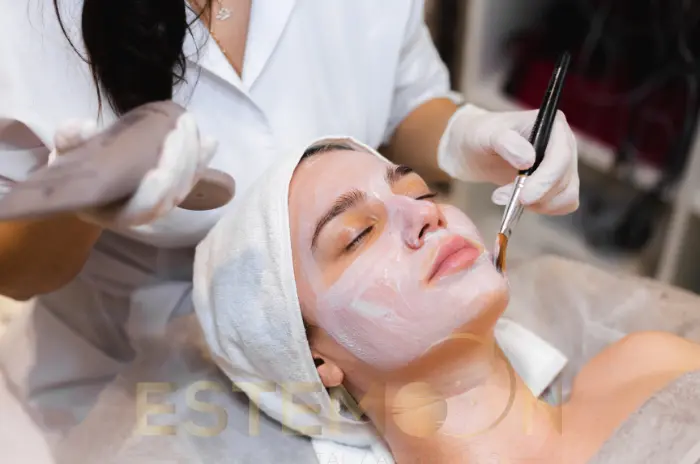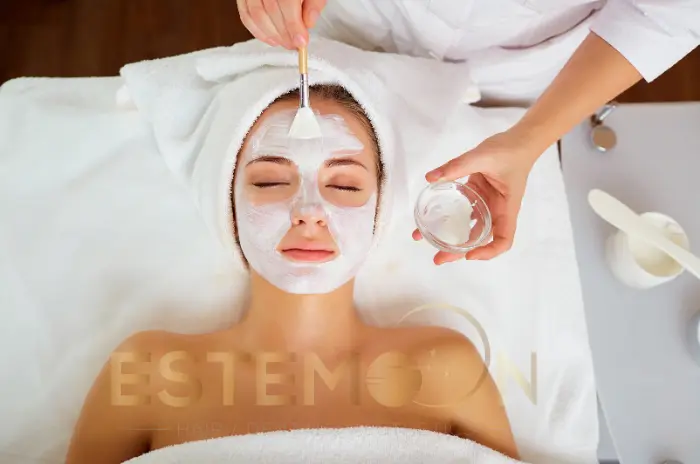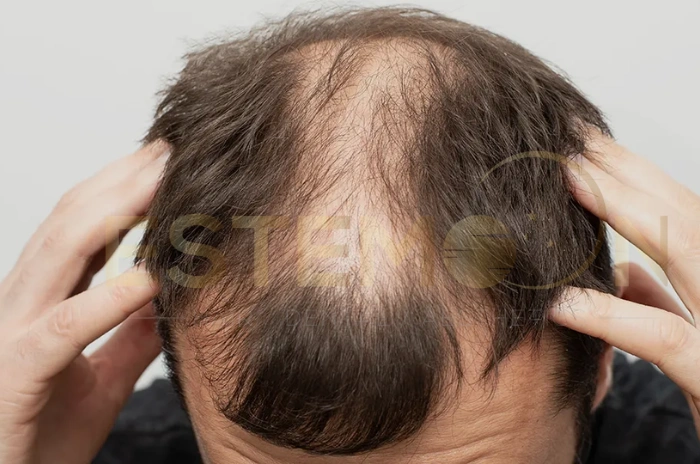Facials are more than just pampering sessions; they play a crucial role in skin health. Whether you’re aiming for a glow-up or addressing skin issues, choosing the right type of facial is key. Understanding the difference between a medical facial and a spa salon facial can help you make an informed decision that suits your skin’s unique needs. This guide provides a detailed breakdown of both options to help you select the right treatment for your skin goals. Whether you’re managing acne, signs of aging, or just need a deep cleanse, the right facial can transform your skin.

What is the Purpose of a Facial?
Facials are essential for enhancing skin texture and hydration. They stimulate blood circulation, boost collagen production, and promote cell regeneration. Whether performed at a facial spa or a clinical setting, the goal is to rejuvenate and maintain skin health.
Facials also help in detoxifying the skin by removing toxins and impurities. Regular sessions can reduce the frequency of breakouts and improve overall skin tone. They are beneficial in relieving stress through facial massage, which soothes facial muscles. In the long run, facials contribute to youthful-looking, resilient skin by supporting its natural repair process.Facials are essential for enhancing skin texture and hydration. They stimulate blood circulation, boost collagen production, and promote cell regeneration. Whether performed at a facial spa or a clinical setting, the goal is to rejuvenate and maintain skin health.
Top Medical Facial Benefits
1. Penetrates Deeper Into The Skin
Medical facials use devices like microdermabrasion or LED therapy to reach deeper skin layers. This helps improve stubborn skin issues like acne scars and pigmentation. Deeper penetration means longer-lasting and more visible results.
2. Customized For Your Skin
Each medical facial is tailored after a detailed skin analysis by professionals. Your treatment evolves over time, adapting to your skin’s needs. This personalized approach ensures optimal results with minimal irritation.
3. Medical Grade Products
Medical facial spa treatments incorporate potent, prescription-level products. These products accelerate skin renewal and stimulate collagen. They offer results that go beyond cosmetic improvements.
4. Cleanliness and Safety
Medical facial procedures are performed in sterile environments with strict hygiene standards. Tools are thoroughly sanitized before every procedure. This reduces infection risks and ensures safe care for sensitive skin.
Who Should Consider a Medical Facial?
Anyone dealing with chronic skin conditions like acne, rosacea, or hyperpigmentation can benefit from medical facials. Individuals on medication for PCOS facial hair often find them helpful for managing hormonal skin changes. It’s also ideal before surgeries or as part of a long-term skincare plan.
Those with sun damage or uneven skin tone
People experiencing premature aging and fine lines
Individuals who want more than cosmetic improvement
Patients looking to boost the effects of dermatological treatments Anyone dealing with chronic skin conditions like acne, rosacea, or hyperpigmentation can benefit from medical facials. Individuals on medication for PCOS facial hair often find them helpful for managing hormonal skin changes. It’s also ideal before surgeries or as part of a long-term skincare plan.
Are Medical Grade Facials Worth it?
For those seeking professional, effective, and lasting results, medical facials are a smart investment. They address root causes, not just surface issues. With regular sessions, you can expect significant improvements in texture and tone.
Summary Table: Medical vs Salon Facials
| Feature | Medical Facial | Salon Facial |
|---|---|---|
| Depth of Treatment | Deep, clinical layers | Surface-level |
| Customization | Highly personalized | Generalized |
| Ingredients Used | Medical-grade | Over-the-counter |
| Ideal For | Acne, aging, pigmentation | Relaxation, mild issues |
| Environment | Clinical, sterile | Spa, calming |
| Cost per Session | $150 – $300 | $50 – $120 |

What Is Salon Facial?
A spa salon facial is a gentle, non-medical treatment focused on relaxation and maintenance. It typically includes cleansing, exfoliation, massage, and mask application. These facials are perfect for those with generally healthy skin.
Helps maintain a youthful glow through consistent care
Ideal for first-time facial clients looking for a comfortable experience
Uses soothing ingredients to calm and hydrate the skin
Supports skin health with minimal downtime and low risk A spa salon facial is a gentle, non-medical treatment focused on relaxation and maintenance. It typically includes cleansing, exfoliation, massage, and mask application. These facials are perfect for those with generally healthy skin.
Top Benefits Of Salon Facials
1. Reduce Stress
The soothing environment of a facial spa helps you unwind both physically and mentally. Gentle massages reduce facial tension and promote circulation. This contributes to both skin wellness and emotional relaxation.
2. Cleanse Your Skin
Spa salon facial treatments provide effective surface-level cleansing. They remove dirt, makeup, and pollutants that can clog pores. This results in refreshed, breathable skin.
3. Delay The Signs Of Aging
With regular sessions, spa salon facial treatments can help preserve your skin’s youthfulness. Hydrating masks and antioxidant-rich serums work to smooth fine lines. While not medical-level, they offer noticeable short-term improvements.
4. Treat Acne And Blemishes
Mild breakouts and blemishes can be managed with clay masks or antibacterial products. Estheticians perform gentle extractions to unclog pores. These facials are helpful for those with occasional acne.
Spa Facials vs Medical Grade Facials: Which is Effective?
1. Medical-Grade Facials
Medical facials are best for deep skin concerns like acne, aging, or post-surgery care. They are results-driven and involve clinical precision. You’ll see noticeable changes within a few sessions.
2. Spa Facials
These are ideal for maintaining already healthy skin and reducing daily stress. They improve surface appearance and provide a temporary glow. Great for people who want routine skin refreshment.
3. Frequency Rate
Medical facials are recommended every 4-6 weeks for lasting results. Spa salon facials can be done more frequently, every 2-4 weeks. The choice depends on your skin goals and conditions.
4. Customization
Medical facials rely on diagnostic tools to create tailored treatments. Spa salon facial options use standard protocols with minor adjustments. Customization is more precise in medical settings.
5. After Treatment Results
Expect deeper, longer-lasting improvements with medical facials. Spa salon facials give you a quick boost in hydration and glow. Both types complement each other when used strategically.
6. Level of Penetration
Medical facial spa treatments go deeper, often into the dermis layer. Spa salon facials focus on the outermost epidermis. This determines how long results will last.
7. Rate of Effectiveness
Medical facials are more effective for clinical skin conditions. Spa salon facials are gentler and better for routine upkeep. Your needs will determine which one is more suitable.
8. Use of Ingredients
Ingredients in medical facials include strong actives like retinoids and salicylic acid. Spa salon facial treatments rely on mild botanicals and hydrating agents. Each serves a specific purpose depending on your skin type.
9. Cost
| Type | Average Cost Per Session |
| Medical Facial | $150 – $300 |
| Salon Facial | $50 – $120 |

FAQs About Medical Facials vs Salon Facials: A Comprehensive Comparison
What is the difference between a medical facial and a salon facial?
Medical facials are performed in clinical settings with medical-grade tools and ingredients, while salon facials focus more on relaxation and surface-level cleansing.
Are medical-grade facials worth the investment?
Yes, especially if you’re targeting specific skin concerns like acne, pigmentation, or aging signs. They provide deeper, long-term results.
Who should consider getting a medical facial?
Individuals with persistent skin problems, those undergoing cosmetic treatments, or those needing a clinical skin solution.
What are the top benefits of salon facials?
They help reduce stress, provide surface cleansing, and enhance short-term skin glow and relaxation.
How often should one get a medical facial versus a salon facial?
Medical facials: every 4-6 weeks. Salon facials: every 2-4 weeks depending on skin needs.
Can salon facials address serious skin concerns effectively?
Not usually. While helpful for general care, they don’t penetrate deep enough to treat chronic or severe skin issues.
What should I expect during a medical facial procedure?
Expect an in-depth skin analysis, medical-grade exfoliation, extractions, and customized serums or peels.
Are there any risks associated with medical facials?
Minor redness or peeling may occur. It’s essential to consult a qualified provider to minimize side effects.
Follow us on social media for updates, tips, and patient success stories:




